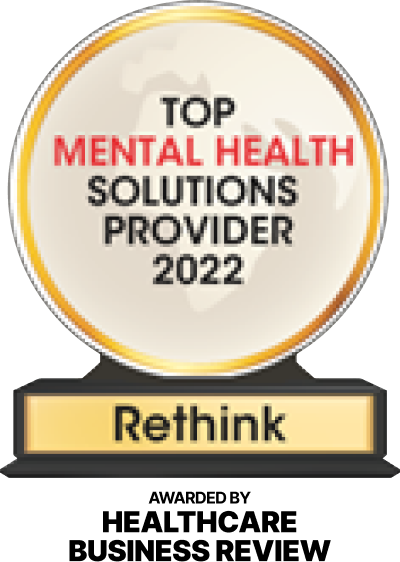Job interviewing can be stressful and intimidating for everyone, especially those with anxiety or those who struggle with effective communication. Seldom do we convey our knowledge, skills, and experience optimally during the interview. We feel under time pressure, so it is easy to forget social gestures such as thanking and making small talk with the people we meet. Once we settle into the interview, our interviewer begins by giving a brief overview of the company and a description of the position. We detect differences between the written role description and how the interviewer describes the job. In the meantime, the interviewer neglects to turn off vibrate mode on their mobile phone. This frustrating situation is easily conceivable for many and all too common for neurodiverse individuals. With these common experiences in mind, let us consider a different approach to job recruitment.
Sourcing:
Requiring formal education limits opportunities for people without college educations who can perform the job. Companies should look beyond academia and instead hire a person based on skill and not assume a college degree would give them that skill. Instead of first asking, “What degrees are desired for the position?” one should first ask, “What skills are needed for the role?” There are other channels to reach candidates besides university recruitment or identifying those with college educations. Many neurodiverse individuals graduate from high school and seek vocational opportunities. Some attributes that make a great software tester are pattern recognition, attention to detail, and focus. One cannot learn those in a classroom; they originate from within.
For diversity of thought and skills, you may consider creating a talent pipeline of neurodiverse individuals, including non-traditional candidates, campus recruits, or those served by community organizations.
Long job vacancies can arise from actions like copying language from similar job postings. If someone interprets a job description literally, they may unjustifiably screen themselves out of consideration. Yet, it would be reasonable for them to assume the description was generic and not exactly what the job entails or requires.
We will use an open position for Programmer as an example. Rather than state an inflated number of years of experience for a programming language, translate that job requirement into daily activities. De-emphasize the number of years and focus on describing what the person will do precisely with the programming language. Go one step further. Explain the desired outcome, which can be the number of programs to write by a certain date. Defining activities and outcomes has the additional benefit of clearing up uncertainty for the recruiter and the candidate about the needed vocational background and ability to deliver outcomes.
Interview Preparation:
When candidates and hiring managers are given little guidance on preparing for the interview, they worry needlessly about it.
Ideally, an agenda would be sent to the candidate by email in advance of the interview. The agenda can include items about:
- Video conferencing—whether the candidate would be interviewed by video or audio-only
- Names and titles of the people who will be doing the interviewing
- Interview length with the start and end times
- When there will be breaks, especially if the candidate will meet with multiple people
- Kind of questions candidates can anticipate
- Any tests given to candidates
- Whether the meeting will be recorded or not
A plan would also be sent to the hiring manager on how to conduct the interview. The plan can include items such as the following:
- Gestures that are expected of the hiring manager, such as how to greet the candidate
- Suggested list of interview questions for the hiring manager
- Resume, cover letter, and other career documents from the candidate
- Candidate assessment forms that break down and rank specific attributes
- FAQ document with answers to the most common questions candidates will ask
Following this straightforward process will build ease and comfort for the hiring manager and candidate, especially if they are neurodivergent. We encourage you to use the same rigor as you would for a potential vendor who impacts your company like that of a new hire.
Some other important considerations for working with a neurodiverse candidate pool:
- Candidate assessment forms should emphasize specific attributes of a preferred candidate based on the job role and the activities and desired outcomes attached to the position.
- The assessment should rank attributes like pattern recognition, attention to detail, and focus high for potential software testers, and rank communication and team-building lower. It would be the inverse for learning and development professionals. Also, tests and Interview questions should be constructed and administered to reflect those attributes.
- Create a worksheet of pros and cons to help you make appropriate decisions regarding moving forward with the candidate. Often strong first impressions can skew one’s image of a candidate, so it is best not to start with your conclusion.
Interviewing
Some interviewing tips to make the process more effective:
- Ask the candidate to describe the job role to resolve any misunderstandings and align each other’s expectations
- Give the candidate enough time to provide complete answers to interview questions
- Ask direct questions to elicit precise information and ensure all questions are consistent across candidates
- Recognize that some candidates may not be comfortable with eye contact or be able to sit still, and this is not necessarily a sign of disinterest
- Use visual aids as much as possible to appeal to different thinking styles and help the candidate truly understand the company, its business model, and the structure of the organizational hierarchy (e.g., a high-level process flow diagram of a company project)
- Share next steps with the candidate and when they will hear back from you
Final thoughts:
Consider streamlining your recruitment process and remove structural issues that may result in too many rounds of interviewing and testing. At the beginning of the planning stage, debrief the hiring manager to help them focus on what matters most in assessing the candidate. This approach will accelerate decision-making and affect both the hiring manager and the candidate positively.
Creating a structured approach to hiring starts with identifying a position you will frequently be hiring at your company. As you adjust the hiring process, you can continually test and recalibrate it. Also, keep the neurodivergent individual in mind in your endeavors. Many neurodiversity hiring programs have found success in building recruitment structures from the ground up, so we suggest you follow their example. There may be some trial and error, but it is well worth the effort.
Contact us to learn more about how Rethink may help your organization promote neurodiversity and inclusion.










